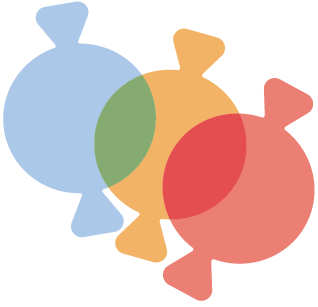Cubbyhole or Cavern -- helping language reach further
We ALL have favorite things. Usually, we like to talk about our favorite things with the people around us.
Sometimes it is favorite foods or snacks. Sometimes it is favorite toys or activities. Maybe it is favorite movies or characters.
When we know that a person LOVES a certain thing, it is easy to default to talking about that thing. And that isn't necessarily wrong.
However, when it comes to augmentative communication, we need to be very cautious about limiting a person's communication options by providing speech boards primarily loaded with favorite things. We might unintentionally dig out only a shallow notch to fill with words that express their favorite items when we really want to excavate an expansive cavern and stock it with words that can fit multiple situations and opportunities.
Flexible Words to Prevent Communication Cave ins
Yes, it is fabulous for a person to be able to find and speak the names of their preferred action heroes or clearly state what they want to munch on at snack time, but the danger in this comes because while it might be fun or convenient to hit these buttons, it greatly limits opportunities for actual engagement and full communication unless there are additional options available.
After all, saying "goldfish crackers" doesn't express how a person feels. It doesn't help you to know if that person has a favorite color or a friend they like to sit by in class.
While "Captain America" may earn a smile from your communicator, it can't tell you their head hurts or that their socks are crinked in an annoying way.
Fringe boards are fun -- and we are HUGE fans of fun -- but you cannot reach full communication through speech boards loaded with only favorite things.
If you give a person a speech board with words only fit for one situation -- for example a speech board full of art words like colors, crayons, paper, etc -- what do they do if they want to talk about the game they played last night or the trip they are going to take to the museum with their grandmother.
Even for communicators who can only speak one word at a time "want," "no," "go," "like," "me," "up," "sorry," "look," "yes," "who," "feel," "bad," or "good" express personal thoughts and ideas that cannot be shared with boards full of favorites.
Core word speech boards can definitely pair with fringe options, but if our goal is actual communication (and it should be) we need to give our communicators access to words that can be used in ANY situation to share their needs, feelings, suggestions, and intentions.
Focus on the Core, but Carve out a Spot for More
While AAC experts strongly suggest using a core communication speech board as the main board for any AAC user, it IS important to have quick access to personalized speech specific to that individual.
CoughDrop has made that quick and easy by providing a sidebar which you can load with your favorites. This makes fringe options readily reachable while still allowing the communication focus to fall on the strength of core words.
Favorite Boards to Encourage AAC Exploration
Core communication speech boards are more flexible for communication in all situations, but that doesn't mean there are not times for activity specific or favorites boards. Used in tandem, we can pair motivating options with the opportunity to express readily decodable messages.
Sometimes, it takes a favorite board to draw a communicator into additional options for expression.
Helping a communicator explore a piano board or a board full of read aloud books might catch their interest and draw them deeper into their communication set.
Hitting speech buttons that make an animal sound or say the name of a beloved character could be a good start to additional communication options.
But it cannot be the end.
Modeling core word usage with these fringe options leads communicators deeper and deeper into the cavern of expression and interaction.
"You like the lion?"
"What do you think?"
"Do it again!"
"Which one?"
"Can I do it?"
"I like that too."
Simple sentences like these stretch the conversation beyond an expressive moment and invite additional dialogue. Even hitting one core button to expand the discussion can have a powerful effect on AAC learning and can promote more expressive communication.
While "FUN" boards are not the solution to full communication, they can be fabulous motivators helping AAC users to dig deeper into speech and discover more expansive opportunities.
Learn more about which words experts have found are most needful for childhood communication here.
